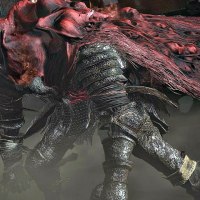With “Tales of the Jedi” Season 1 out, we now have two “Star Wars” anthology series (the other one is “Visions”). Showrunner Dave Filoni uses this first season of six short episodes to flesh out the backstories of Count Dooku (Corey Burton) and Ahsoka Tano (Ashley Epstein), who get three episodes each.
Spoilers ahead.
For Ahsoka, we get a tale from her early years as a child in which her family discovers that she is force-sensitive (Episode 1: “Life and Death”); a tale in which her master, Anakin Skywalker (Matt Lanter), trains her to sense danger even in her allies (Episode 5: “Practice Makes Perfect”), which no doubt allows her to survive Order 66 in “The Clone Wars” Season 7; and a tale post-Order 66 in which her status as a former Jedi Padawan is compromised, and she has to face an Imperial Inquisitor (Episode 6: “Resolve”).

Dooku’s journey takes up Episodes 2-4 (Episode 2: “Justice,” Episode 3: “Choices” and Episode 3: “The Sith Lord”), and his episodes are much stronger than Ahsoka’s. In Episode 2, we see Dooku as a Jedi with his Padawan, Qui-Gon Jinn (Micheál Richardson), as they get sent on a mission to retrieve a senator’s kidnapped son, only to learn that the senator had been exploiting the planet, and his actions were made possible by the Galactic Republic. In Episode 3, we see him go on a mission with fellow Jedi Mace Windu (TC Carson) to investigate the death of another Jedi, only to learn that she was killed by those trying to fight against another corrupt leader supported by the Republic.
Finally, in Episode 4, we see Dooku’s fall from the order reach its climax, as he learns that Qui-Gon’s (now voiced by Liam Neeson) report of his incident on Tatooine in which he fought a Sith Lord (Darth Maul) wasn’t taken seriously, which arguably leads to his death on Naboo in “Star Wars: Episode I — The Phantom Menace.” Dooku skips Qui-Gon’s funeral to confront Darth Sidious (Ian McDiarmid), Maul’s master and a Sith Lord whom he had been working with, for allowing Qui-Gon to be killed. However, he is followed by Jedi Master Yaddle (Bryce Dallas Howard), who tries to bring Dooku back to the light side, but is unsuccessful. Killing her ends up being Dooku’s last step in his fall to the dark side, cementing him as Sidious’ new apprentice.
It must be said that there is nothing wrong with Ahsoka’s episodes, they just don’t paint as complete a story as Dooku’s do. With his episodes, we see him go from a skeptical Jedi Master with dark tendencies (like Anakin Skywalker) to a fully-fledged Sith Lord and traitor to the Jedi Order. I like how his fall is gradual — he sticks with the Jedi as long as he can, but concludes that they are immune to reform and must fall, as they are complicit to corruption. The corruption he encounters also echoes the corruption we see in the Preox-Morlana Authority in “Andor”; the Empire Sidious is building will stamp it out by creating a fascist government where only complete compliance is tolerated, which comes at the cost of personal freedom.

Ahsoka’s episodes work best as disconnected short films. Episode 1 is easily the weakest in the show, and at times can be a chore to get through. Episode 5 feels like a Marvel One-Shot — supplementary material that enhances “The Clone Wars” Season 7, specifically when the 501st Legion turns on her during Order 66 as it gives explanation for why she was ready to fend off its clone ambush when most other Jedi were taken by surprise. Episode 6 is like a cut episode of either “Clone Wars” Season 7, “The Bad Batch” or “Rebels;” it’s a self-contained story that adds very little to the “Star Wars” world or Ahsoka’s character, though how quickly she dispatches the Inquisitor in the show does mirror the conclusion to Obi-Wan Kenobi and Maul’s fight in “Rebels.” It’s like poetry; it rhymes.
I saw a few fan complaints on social media about how this show needs to move away from the prequel era, and I agree that should be the case for Season 2. The framework of this show allows for stories to take place in any “Star Wars” era, including but not limited to the High Republic and “Knight of the Old Republic” eras. With that being said, I also understand why the prequel era was chosen for Season 1 — Count Dooku and Ahsoka are familiar characters fans can latch onto, and it paid off. Dooku in particular has an interesting backstory that’s only been told to us through dialogue on screen.

Though I will admit it’s time to take the spotlight off of Ahsoka, with the exception of her upcoming live action show. There are many other great characters in this universe that deserve to have their stories told, and outside of her dedicated show, there is very little room for her character to be developed further.
I would give Dooku’s episodes as a whole a 9/10, and Ahsoka’s episodes a 6/10. Dooku’s episodes tell a unique “Star Wars” story that makes a mostly flat character feel multidimensional, while Ahsoka’s episodes are just average. My overall rating for this show’s first season splits the difference between those two scores.
If you’ve never seen a “Star Wars” film or show before, this show won’t do anything for you. However, if you’re a “Star Wars” fan, this is a pretty decent supplementary series.
“Star Wars: Tales of the Jedi” Season 1 gets a 7.5/10





Leave a comment